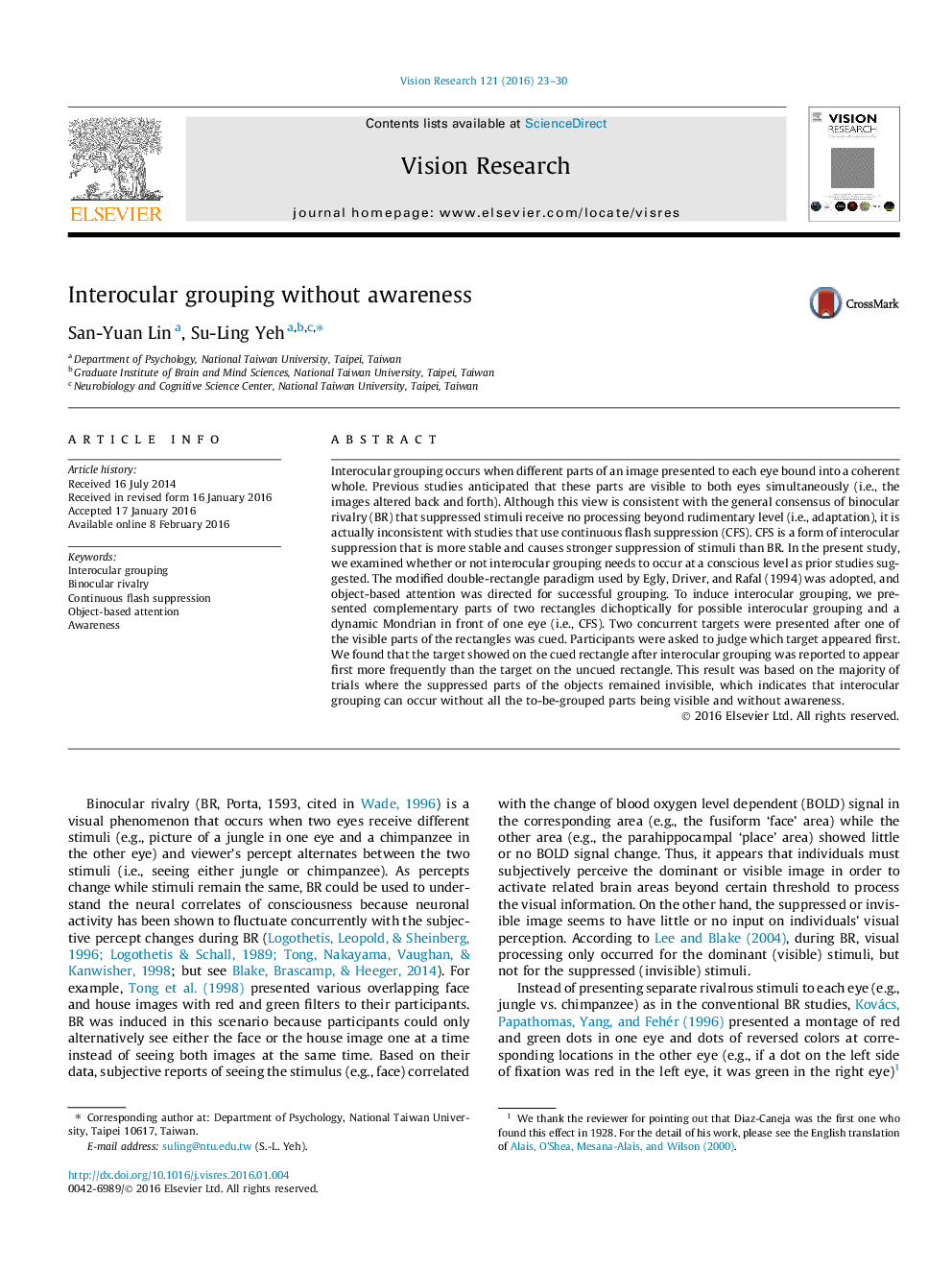| Article ID | Journal | Published Year | Pages | File Type |
|---|---|---|---|---|
| 6203024 | Vision Research | 2016 | 8 Pages |
Interocular grouping occurs when different parts of an image presented to each eye bound into a coherent whole. Previous studies anticipated that these parts are visible to both eyes simultaneously (i.e., the images altered back and forth). Although this view is consistent with the general consensus of binocular rivalry (BR) that suppressed stimuli receive no processing beyond rudimentary level (i.e., adaptation), it is actually inconsistent with studies that use continuous flash suppression (CFS). CFS is a form of interocular suppression that is more stable and causes stronger suppression of stimuli than BR. In the present study, we examined whether or not interocular grouping needs to occur at a conscious level as prior studies suggested. The modified double-rectangle paradigm used by Egly, Driver, and Rafal (1994) was adopted, and object-based attention was directed for successful grouping. To induce interocular grouping, we presented complementary parts of two rectangles dichoptically for possible interocular grouping and a dynamic Mondrian in front of one eye (i.e., CFS). Two concurrent targets were presented after one of the visible parts of the rectangles was cued. Participants were asked to judge which target appeared first. We found that the target showed on the cued rectangle after interocular grouping was reported to appear first more frequently than the target on the uncued rectangle. This result was based on the majority of trials where the suppressed parts of the objects remained invisible, which indicates that interocular grouping can occur without all the to-be-grouped parts being visible and without awareness.
